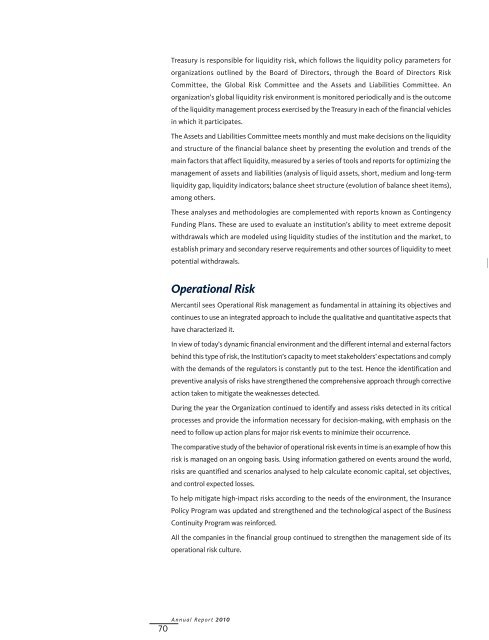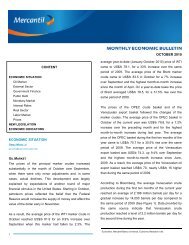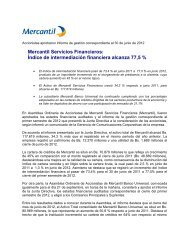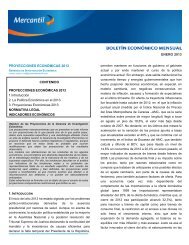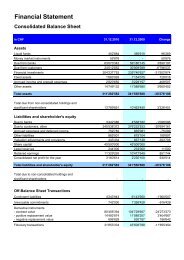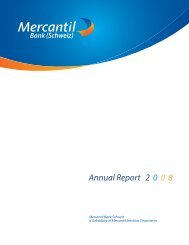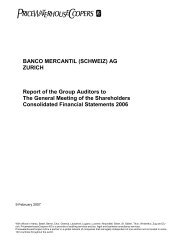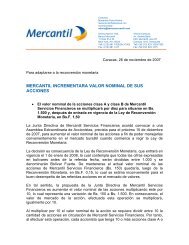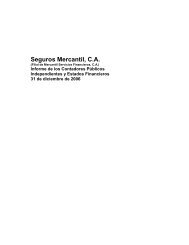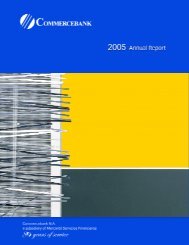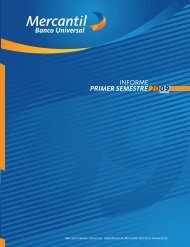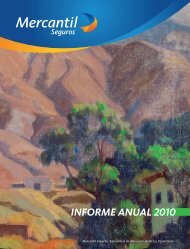ANNUAL REPORT 2010
ANNUAL REPORT 2010
ANNUAL REPORT 2010
Create successful ePaper yourself
Turn your PDF publications into a flip-book with our unique Google optimized e-Paper software.
Treasury is responsible for liquidity risk, which follows the liquidity policy parameters for<br />
organizations outlined by the Board of Directors, through the Board of Directors Risk<br />
Committee, the Global Risk Committee and the Assets and Liabilities Committee. An<br />
organization’s global liquidity risk environment is monitored periodically and is the outcome<br />
of the liquidity management process exercised by the Treasury in each of the financial vehicles<br />
in which it participates.<br />
The Assets and Liabilities Committee meets monthly and must make decisions on the liquidity<br />
and structure of the financial balance sheet by presenting the evolution and trends of the<br />
main factors that affect liquidity, measured by a series of tools and reports for optimizing the<br />
management of assets and liabilities (analysis of liquid assets, short, medium and long-term<br />
liquidity gap, liquidity indicators; balance sheet structure (evolution of balance sheet items),<br />
among others.<br />
These analyses and methodologies are complemented with reports known as Contingency<br />
Funding Plans. These are used to evaluate an institution’s ability to meet extreme deposit<br />
withdrawals which are modeled using liquidity studies of the institution and the market, to<br />
establish primary and secondary reserve requirements and other sources of liquidity to meet<br />
potential withdrawals.<br />
Operational Risk<br />
Mercantil sees Operational Risk management as fundamental in attaining its objectives and<br />
continues to use an integrated approach to include the qualitative and quantitative aspects that<br />
have characterized it.<br />
In view of today’s dynamic financial environment and the different internal and external factors<br />
behind this type of risk, the Institution’s capacity to meet stakeholders’ expectations and comply<br />
with the demands of the regulators is constantly put to the test. Hence the identification and<br />
preventive analysis of risks have strengthened the comprehensive approach through corrective<br />
action taken to mitigate the weaknesses detected.<br />
During the year the Organization continued to identify and assess risks detected in its critical<br />
processes and provide the information necessary for decision-making, with emphasis on the<br />
need to follow up action plans for major risk events to minimize their occurrence.<br />
The comparative study of the behavior of operational risk events in time is an example of how this<br />
risk is managed on an ongoing basis. Using information gathered on events around the world,<br />
risks are quantified and scenarios analysed to help calculate economic capital, set objectives,<br />
and control expected losses.<br />
To help mitigate high-impact risks according to the needs of the environment, the Insurance<br />
Policy Program was updated and strengthened and the technological aspect of the Business<br />
Continuity Program was reinforced.<br />
All the companies in the financial group continued to strengthen the management side of its<br />
operational risk culture.<br />
Annual Report <strong>2010</strong><br />
70


